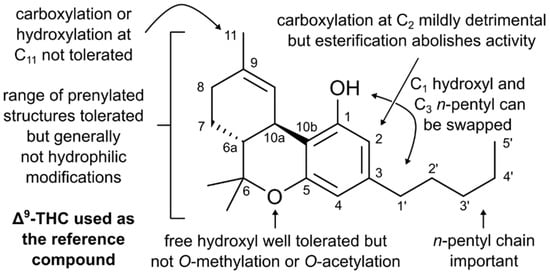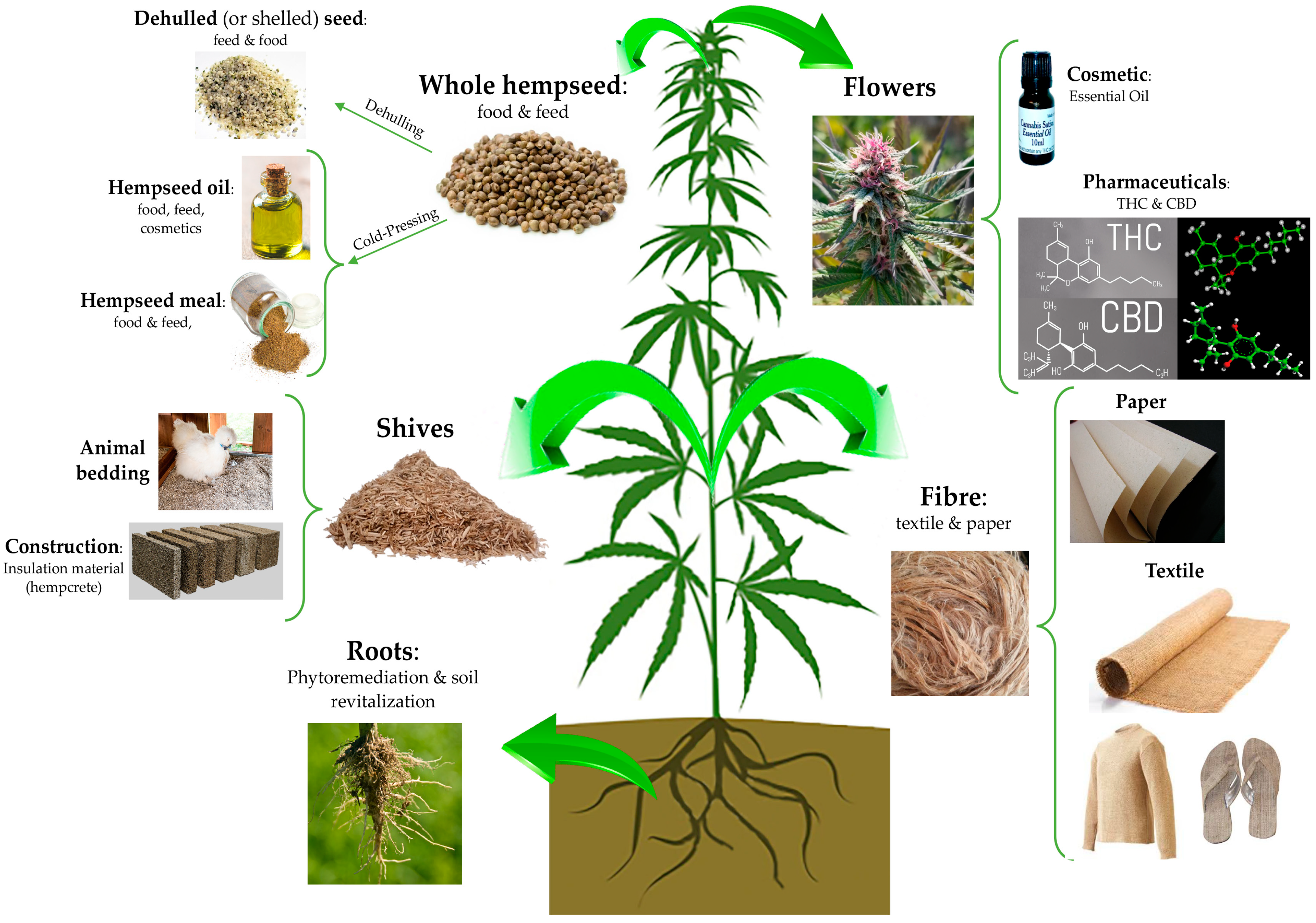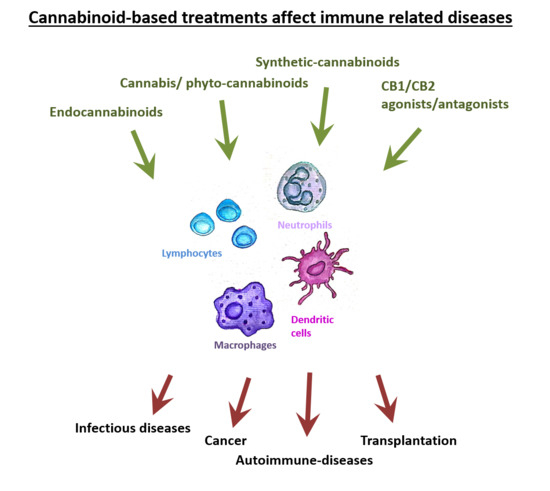 “The compounds present in cannabis have been in use for both recreational and medicinal purposes for many centuries. Changes in the legislation in South Africa have led to an increase in the number of people interested in using these compounds for self-medication. Many of them may approach their general practitioner as the first source of information about possible therapeutic effects. It is important that medical professionals are able to give patients the correct information. Cannabidiol (CBD) is one of the main compounds in cannabis plants, and there is evidence that it can successfully treat certain patients with epilepsy. This review looks at the most recent evidence on the use of CBD in the treatment of epilepsy and explores the mechanisms behind these beneficial effects.”
“The compounds present in cannabis have been in use for both recreational and medicinal purposes for many centuries. Changes in the legislation in South Africa have led to an increase in the number of people interested in using these compounds for self-medication. Many of them may approach their general practitioner as the first source of information about possible therapeutic effects. It is important that medical professionals are able to give patients the correct information. Cannabidiol (CBD) is one of the main compounds in cannabis plants, and there is evidence that it can successfully treat certain patients with epilepsy. This review looks at the most recent evidence on the use of CBD in the treatment of epilepsy and explores the mechanisms behind these beneficial effects.”
Tag Archives: plant
The Antimicrobial Activity of Cannabinoids
 “A post-antibiotic world is fast becoming a reality, given the rapid emergence of pathogens that are resistant to current drugs. Therefore, there is an urgent need to discover new classes of potent antimicrobial agents with novel modes of action.
“A post-antibiotic world is fast becoming a reality, given the rapid emergence of pathogens that are resistant to current drugs. Therefore, there is an urgent need to discover new classes of potent antimicrobial agents with novel modes of action.
Cannabis sativa is an herbaceous plant that has been used for millennia for medicinal and recreational purposes. Its bioactivity is largely due to a class of compounds known as cannabinoids.
Recently, these natural products and their analogs have been screened for their antimicrobial properties, in the quest to discover new anti-infective agents. This paper seeks to review the research to date on cannabinoids in this context, including an analysis of structure-activity relationships. It is hoped that it will stimulate further interest in this important issue.”
https://pubmed.ncbi.nlm.nih.gov/32668669/
https://www.mdpi.com/2079-6382/9/7/406

Phytocannabinoids: Origins and Biosynthesis
 “Phytocannabinoids are bioactive natural products found in some flowering plants, liverworts, and fungi that can be beneficial for the treatment of human ailments such as pain, anxiety, and cachexia. Targeted biosynthesis of cannabinoids with desirable properties requires identification of the underlying genes and their expression in a suitable heterologous host. We provide an overview of the structural classification of phytocannabinoids based on their decorated resorcinol core and the bioactivities of naturally occurring cannabinoids, and we review current knowledge of phytocannabinoid biosynthesis in Cannabis, Rhododendron, and Radula species. We also highlight the potential in planta roles of phytocannabinoids and the opportunity for synthetic biology approaches based on combinatorial biochemistry and protein engineering to produce cannabinoid derivatives with improved properties.”
“Phytocannabinoids are bioactive natural products found in some flowering plants, liverworts, and fungi that can be beneficial for the treatment of human ailments such as pain, anxiety, and cachexia. Targeted biosynthesis of cannabinoids with desirable properties requires identification of the underlying genes and their expression in a suitable heterologous host. We provide an overview of the structural classification of phytocannabinoids based on their decorated resorcinol core and the bioactivities of naturally occurring cannabinoids, and we review current knowledge of phytocannabinoid biosynthesis in Cannabis, Rhododendron, and Radula species. We also highlight the potential in planta roles of phytocannabinoids and the opportunity for synthetic biology approaches based on combinatorial biochemistry and protein engineering to produce cannabinoid derivatives with improved properties.”
https://pubmed.ncbi.nlm.nih.gov/32646718/
https://linkinghub.elsevier.com/retrieve/pii/S1360138520301874
The Seed of Industrial Hemp ( Cannabis sativa L.): Nutritional Quality and Potential Functionality for Human Health and Nutrition
 “Hempseeds, the edible fruits of the Cannabis sativa L. plant, were initially considered a by-product of the hemp technical fibre industry. Nowadays, following the restorationing of the cultivation of C. sativa L. plants containing an amount of delta-9-tetrahydrocannabinol (THC) <0.3% or 0.2% (industrial hemp) there is a growing interest for the hempseeds production due to their high nutritional value and functional features.
“Hempseeds, the edible fruits of the Cannabis sativa L. plant, were initially considered a by-product of the hemp technical fibre industry. Nowadays, following the restorationing of the cultivation of C. sativa L. plants containing an amount of delta-9-tetrahydrocannabinol (THC) <0.3% or 0.2% (industrial hemp) there is a growing interest for the hempseeds production due to their high nutritional value and functional features.
The goal of this review is to examine the scientific literature concerning the nutritional and functional properties of hempseeds. Furthermore, we revised the scientific literature regarding the potential use of hempseeds and their derivatives as a dietary supplement for the prevention and treatment of inflammatory and chronic-degenerative diseases on animal models and humans too.
In the first part of the work, we provide information regarding the genetic, biochemical, and legislative aspects of this plant that are, in our opinion essential to understand the difference between “industrial” and “drug-type” hemp. In the final part of the review, the employment of hempseeds by the food industry as livestock feed supplement and as ingredient to enrich or fortify daily foods has also revised.
Overall, this review intends to encourage further and comprehensive investigations about the adoption of hempseeds in the functional foods field.”
https://pubmed.ncbi.nlm.nih.gov/32610691/
https://www.mdpi.com/2072-6643/12/7/1935

Interactions Between Cannabidiol and Δ 9 -Tetrahydrocannabinol in Modulating Seizure Susceptibility and Survival in a Mousae Model of Dravet Syndrome
 “Extracts from the cannabis plant can dramatically improve the health of children suffering from refractory epilepsies such as Dravet syndrome.
“Extracts from the cannabis plant can dramatically improve the health of children suffering from refractory epilepsies such as Dravet syndrome.
These extracts typically contain cannabidiol (CBD), a phytocannabinoid with well-documented anticonvulsant effects, but may also contain Δ9 -tetrahydrocannabinol (Δ9 -THC). It is unclear whether the presence of Δ9 -THC modulates the anticonvulsant efficacy of CBD. Here we utilized the Scn1a+/- mouse model of Dravet syndrome to examine this question.
Key results: Administered alone, CBD (100 mg/kg i.p.) was anticonvulsant against hyperthermia-induced seizures as were low (0.1 and 0.3 mg/kg i.p.) but not higher doses of Δ9 -THC. A subthreshold dose of CBD (12 mg/kg) enhanced the anticonvulsant effects Δ9 -THC (0.1 mg/kg). Subchronic oral administration of Δ9 -THC or CBD alone did not affect spontaneous seizure frequency or mortality while, surprisingly, their co-administration increased the severity of spontaneous seizures and overall mortality.
Conclusion and implications: Low doses of Δ9 -THC are anticonvulsant against hyperthermia-induced seizures in Scn1a+/ mice, effects that are enhanced by a sub-anticonvulsant dose of CBD. However, proconvulsant effects and increased premature mortality are observed when CBD and Δ9 -THC are subchronically dosed in combination. The possible explanations and implications of this are discussed.”
https://pubmed.ncbi.nlm.nih.gov/32608111/
https://bpspubs.onlinelibrary.wiley.com/doi/abs/10.1111/bph.15181
The Effectiveness of Cannabis Flower for Immediate Relief From Symptoms of Depression
 “Scientific research on how consumption of whole, natural Cannabis flower affects low mood and behavioral motivations more generally is largely nonexistent, and few studies to date have measured how common and commercially available Cannabis flower used in vivo may affect the experience of “depression” in real-time.
“Scientific research on how consumption of whole, natural Cannabis flower affects low mood and behavioral motivations more generally is largely nonexistent, and few studies to date have measured how common and commercially available Cannabis flower used in vivo may affect the experience of “depression” in real-time.
Results: On average, 95.8% of users experienced symptom relief following consumption with an average symptom intensity reduction of -3.76 points on a 0-10 visual analogue scale (SD = 2.64, d = 1.71, p <.001). Symptom relief did not differ by labeled plant phenotypes (“C. indica,” “C. sativa,” or “hybrid”) or combustion method. Across cannabinoid levels, tetrahydrocannabinol (THC) levels were the strongest independent predictors of symptom relief, while cannabidiol (CBD) levels, instead, were generally unrelated to real-time changes in symptom intensity levels. Cannabis use was associated with some negative side effects that correspond to increased depression (e.g. feeling unmotivated) in up to 20% of users, as well as positive side effects that correspond to decreased depression (e.g. feeling happy, optimistic, peaceful, or relaxed) in up to 64% of users.
Conclusions: The findings suggest that, at least in the short term, the vast majority of patients that use cannabis experience antidepressant effects, although the magnitude of the effect and extent of side effect experiences vary with chemotypic properties of the plant.”
https://pubmed.ncbi.nlm.nih.gov/32607086/
“In conclusion, almost all patients in our sample experienced symptom relief from using Cannabis to treat depression and with minimal evidence of serious side effects in the short run.”
Pharmacological Analysis of Cannabis Sativa: A Potent Herbal Plant
 “Genus Cannabis belong to family Cannabaceae and is traditionally used as medicinal plant against many diseases notably asthma, malaria, treatment of skin diseases, diabetes and headache. The plant Cannabis sativa L. is flowering and an annual herbaceous plant located to eastern Asia but now of cosmopolitan distribution due to extensive cultivation.
“Genus Cannabis belong to family Cannabaceae and is traditionally used as medicinal plant against many diseases notably asthma, malaria, treatment of skin diseases, diabetes and headache. The plant Cannabis sativa L. is flowering and an annual herbaceous plant located to eastern Asia but now of cosmopolitan distribution due to extensive cultivation.
Aim of the study: The aim of review is to provide a complete evaluation of the botanical, ethnological and chemical aspects of Cannabis sativa L., and its importance in pharmacological studies.
Results and discussions: This article briefly reviews the botany, traditional knowledge, pharmacological and therapeutic application of the plant C. sativa. This is an attempt to compile and document information about the chemical constituent, pharmacological and therapeutic effects of C. sativa as important herbal drug due to its safety and effectiveness. Studies have revealed its use as anti-bacterial, anti-fungal, anti-cancer, anti-inflammatory and improving testicular function in rats. Consumption of C. sativa is greater in all over the world among all other drugs of abuse in its various forms such as marijuana, hashish and cannabis oil. The study of herbal medicine spans the knowledge of biology, history, source, physical and chemical nature, and mechanism of action, traditional, medicinal and therapeutic use of drug. This article also provide knowledge about macroscopically and microscopically characters of Cannabis sativa with geographical sources. The wellknown cannabinoids are Tetrahydrocannabinol (THC), Cannabidiol (CBD) and Cannabichromene (CBC) and their pharmacological properties and importance have been extensively studied. Hence, efforts are required to establish and validate evidence regarding safety and practices of Ayurveda medicines.
Conclusion: Thes studies will help in expanding the current therapeutic potential of C. sativa and it also provide a strong support to its future clinical use as herbal medicines having safe in use with no side effects.”
Antioxidants Help Favorably Regulate the Kinetics of Lipid Peroxidation, Polyunsaturated Fatty Acids Degradation and Acidic Cannabinoids Decarboxylation in Hempseed Oil

Cannabis, the Endocannabinoid System and Immunity-the Journey From the Bedside to the Bench and Back
 “The Cannabis plant contains numerous components, including cannabinoids and other active molecules. The phyto-cannabinoid activity is mediated by the endocannabinoid system. Cannabinoids affect the nervous system and play significant roles in the regulation of the immune system.
“The Cannabis plant contains numerous components, including cannabinoids and other active molecules. The phyto-cannabinoid activity is mediated by the endocannabinoid system. Cannabinoids affect the nervous system and play significant roles in the regulation of the immune system.
While Cannabis is not yet registered as a drug, the potential of cannabinoid-based medicines for the treatment of various conditions has led many countries to authorize their clinical use. However, the data from basic and medical research dedicated to medical Cannabis is currently limited.
A variety of pathological conditions involve dysregulation of the immune system. For example, in cancer, immune surveillance and cancer immuno-editing result in immune tolerance. On the other hand, in autoimmune diseases increased immune activity causes tissue damage.
Immuno-modulating therapies can regulate the immune system and therefore the immune-regulatory properties of cannabinoids, suggest their use in the therapy of immune related disorders.
In this contemporary review, we discuss the roles of the endocannabinoid system in immunity and explore the emerging data about the effects of cannabinoids on the immune response in different pathologies. In addition, we discuss the complexities of using cannabinoid-based treatments in each of these conditions.”
https://pubmed.ncbi.nlm.nih.gov/32585801/
https://www.mdpi.com/1422-0067/21/12/4448

Medical Cannabis for the Management of Pain and Quality of Life in Chronic Pain Patients: A Prospective Observational Study

“Objective: To evaluate the short-term and long-term effects of plant-based medical cannabis in a chronic pain population over the course of one year.
Results: Medical cannabis treatment was associated with improvements in pain severity and interference (P < 0.001) observed at one month and maintained over the 12-month observation period. Significant improvements were also observed in the SF-12 physical and mental health domains (P < 0.002) starting at three months. Significant decreases in headaches, fatigue, anxiety, and nausea were observed after initiation of treatment (P ≤ 0.002). In patients who reported opioid medication use at baseline, there were significant reductions in oral morphine equivalent doses (P < 0.0001), while correlates of pain were significantly improved by the end of the study observation period.
Conclusions: Taken together, the findings of this study add to the cumulative evidence in support of plant-based medical cannabis as a safe and effective treatment option and potential opioid medication substitute or augmentation therapy for the management of symptoms and quality of life in chronic pain patients.”
